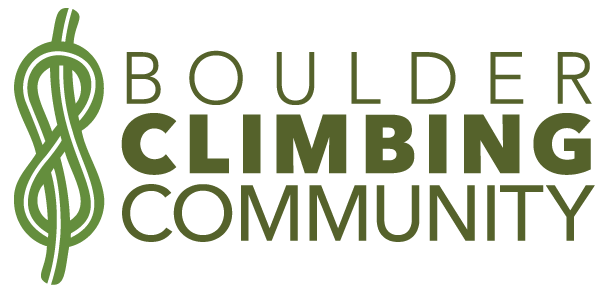Seasonal Raptor Closures are Being Lifted Early
Each year, the Boulder Climbing Community partners with the US Forest Service, Rocky Mountain National Park, and City of Boulder Open Space and Mountain Parks to help monitor nesting raptor species and get the word out about seasonal closures at popular climbing areas. Via raptor monitoring, the climbing community has been able to build trust and connections with land management agencies that have helped preserve and improve climbing along the Front Range.
Did you know that climbers have been involved in raptor monitoring in Boulder Canyon since 1983. During that time climbers have documented 29 Golden Eagles fledged in the canyon!
Land management agencies have dual obligations to preserve natural resources and promote recreational opportunities. A crag closure process that balances the needs of cliff-nesting raptors and the wants of climbers is ideal, but balancing these competing goals is resource intensive. When resources are limited, a precautionary strategy for resource managers is to have more extensive (in space and time), conservative closures. Conservative closures could be larger or last longer than necessary, but nonetheless provide raptors with the protection needed for successful reproduction. Over the past years, the Boulder Climbing Community, Access Fund, US Forest Service Boulder Ranger District, City of Boulder OSMP and Rocky Mountain National Park have been working together to find ways to allocate more resources toward raptor and climbing management to make closures as effective (for raptors) and efficient (for climbers) as possible.
In 2023, that has resulted in:
1. Climbing areas in Boulder Canyon, RMNP, and the Flatirons being reopened early for climbing. Check out our closure page for up do date closures and see what areas have reopened for climbing.
2. Successful fledging of one Golden Eagle chick at Eagle Rock.
3. RMNP has hired a seasonal wildlife biologist dedicated to bird biology, with a large share of time allotted to raptor management.
4. The community has provided a dozen volunteer observers, some of whom are local climbers, who go out several times a week during the breeding season to determine active territories and nest fates.
5. RMNP has provided climbing rangers who work with the wildlife biologist and volunteer observers to conduct test climbs that confirm observer reports that raptors are not nesting on crags. In 2023, the climbing rangers put more than 100 person hours towards those efforts.
6. The community has provided volunteer climbers who, along with climbing rangers, conduct post-season nest visits to determine specific nest locations and glean more details about nest fate. In 2022, volunteers put approximately 300 person hours towards observation and nest visit efforts.
Thanks to everyone at the the various land management agencies and in the community for contributing to this win-win effort!

